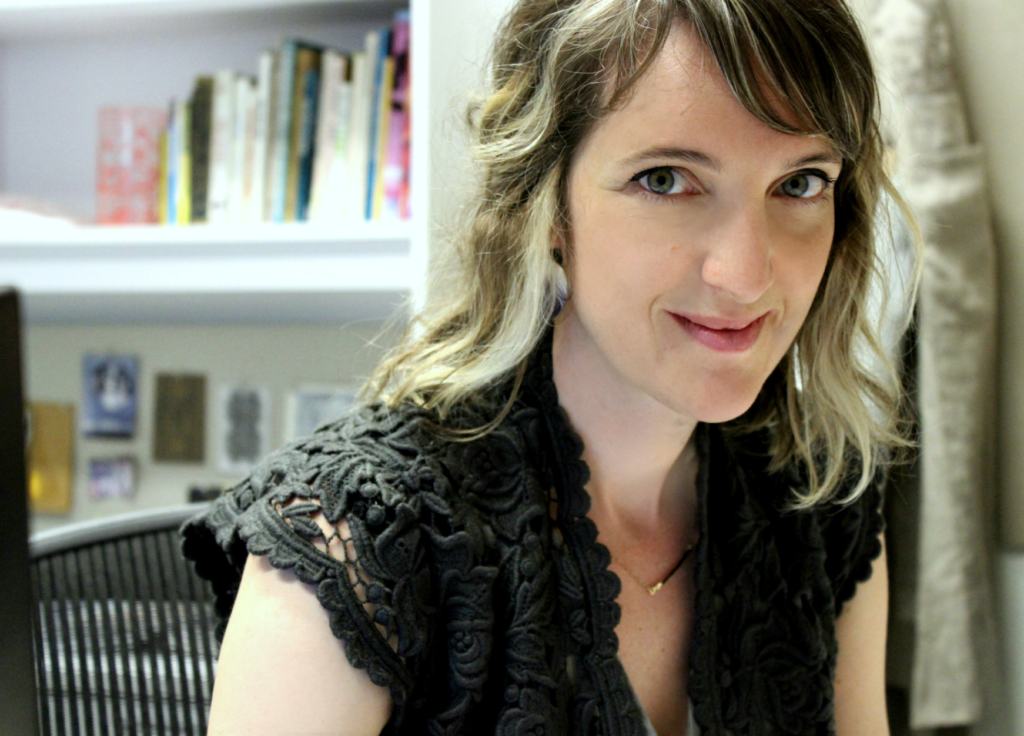
I grew up on Cape Cod. My first official textile project was splatter painting curtains made from old sheets when I was in 3rd grade. My grandmother was a weaver in Deerfield Massachusetts. She taught me sewing, knitting, crochet, weaving, and bead weaving.
When I would visit in the summers, we would work on projects together- usually sewing new outfits. I was never satisfied with the fabric options in the store. This love of working with fabric from a young age helped me to understand that textile design is really about form in all three dimensions- not just pattern. In high school, I made my own clothes and practiced batik and dyeing fabrics….
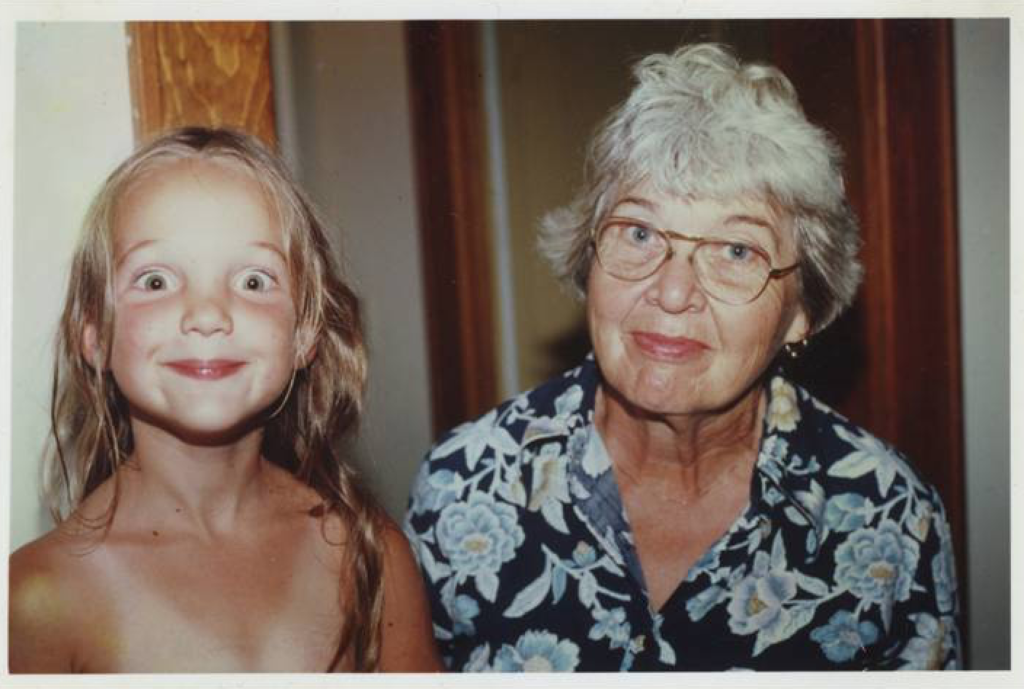
After 2 years of studying printmaking, painting and teaching batik workshops at the University of Massachusetts, I transferred to the Rhode Island School of Design’s Textile department. Studying both printed and woven techniques, I realized, for the first time, the extent of their practical applications within the textile industry. During my junior year at RISD, we took a field trip to New York City to visit designers working in the industry. The seed of the possibility to actually have a job designing fabrics was planted. I never imagined moving to NYC before this.
Graduation with a BFA in 1999 brought me to New York and a job in the custom department of Echo, designing printed silk scarves. In November of the following year, I joined the POLLACK Studio as a designer.
In 2007 I was appointed Vice President, Associate Design Director, and in 2012 I took the helm as Design Director for POLLACK. I worked closely with the founder, Mark Pollack, for 12 years before he retired. Working with Mark was like going to grad school- an in-depth continuation of my textiles education.
When I tell people that I am a textile designer, they automatically think that I work in fashion or they think that I sit around drawing patterns all day long and then it’s woven into fabric. But there’s a big difference between being a pattern designer and a textile designer creating woven, structured fabrics. In our studio, there are many considerations that we take into account when designing. Often times the pattern is secondary.
There are interesting construction capabilities that we work with and there are limitations. It is what we can do within these limitations that can make a fabric special. Our toolbox is much more than a paintbrush and colors: We are working with yarn, luster, woven pattern, light, drape and composite colors of the warp and weft working together. Understanding how a fabric is built from the ground up is the basis of our design approach. Making a pretty fabric is a lot more complicated than it may look!
Woven fabrics are made on a loom. The yarns that are lengthwise and attached to the loom are called the warp. Every single strand in the warp is called an end. The yarns that are crosswise are called the weft or the filling. Every single strand in the weft is called a pick.
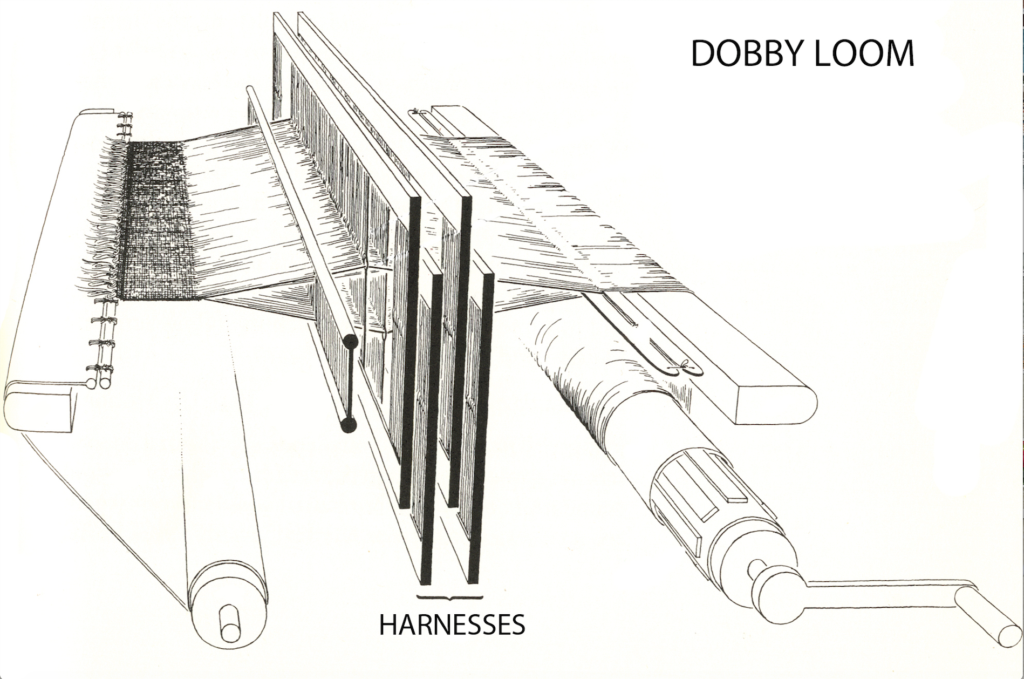
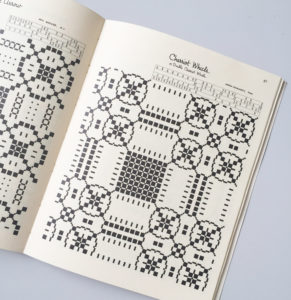 Fabrics woven on a dobby loom have a limited number of harnesses. Harnesses are the mechanisms that lift the yarns. Because of the limited harnesses, the patterning in dobby weaves is geometric with small repeating patterns.
Fabrics woven on a dobby loom have a limited number of harnesses. Harnesses are the mechanisms that lift the yarns. Because of the limited harnesses, the patterning in dobby weaves is geometric with small repeating patterns.
I have some beautiful old books from my grandmother showing traditional American dobby coverlet patterns. You can see how these patterns inspired our fabric ‘Weave On’ in the below video; though inspired by the look of dobby patterns, this is a jacquard fabric— as it’s woven on a jacquard loom.
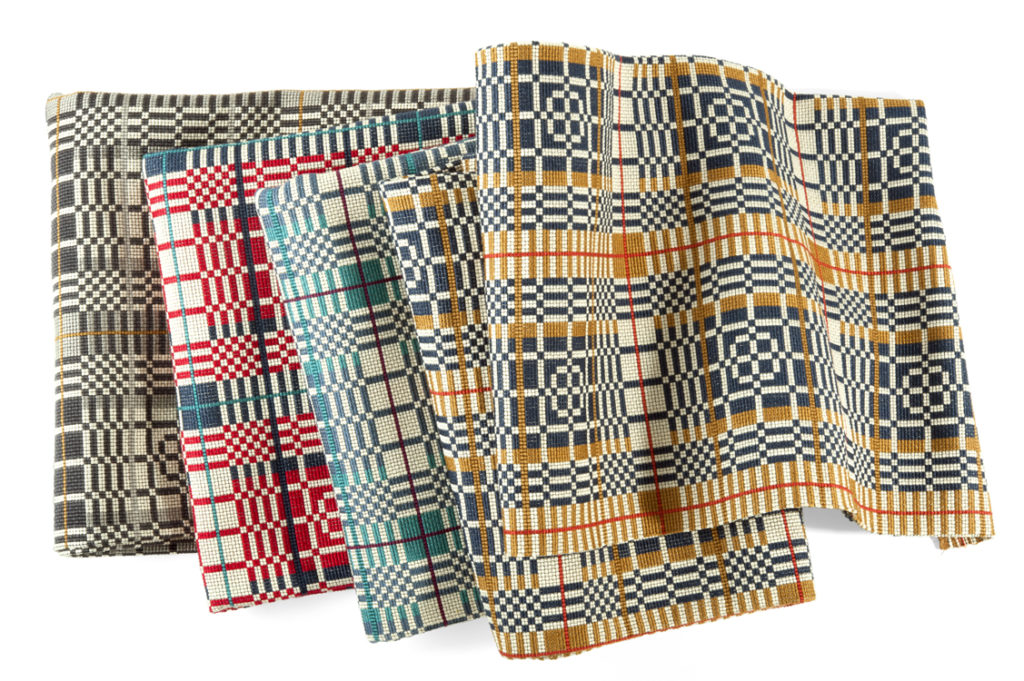
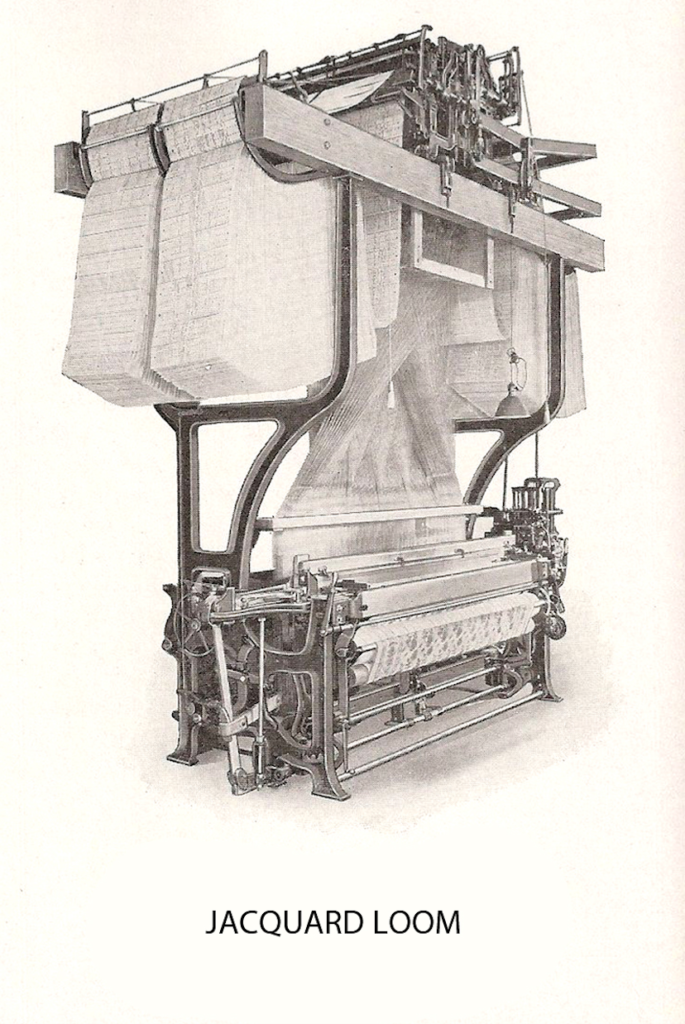
Jacquard fabrics, by comparison, are fabrics that are woven on a jacquard loom. This is a system of weaving that doesn’t use harnesses. Instead, each warp end can move individually allowing for large patterns and organic designs as opposed to the blocky geometry in a dobby. This system of weaving is used for tapestries, brocades, and damasks.
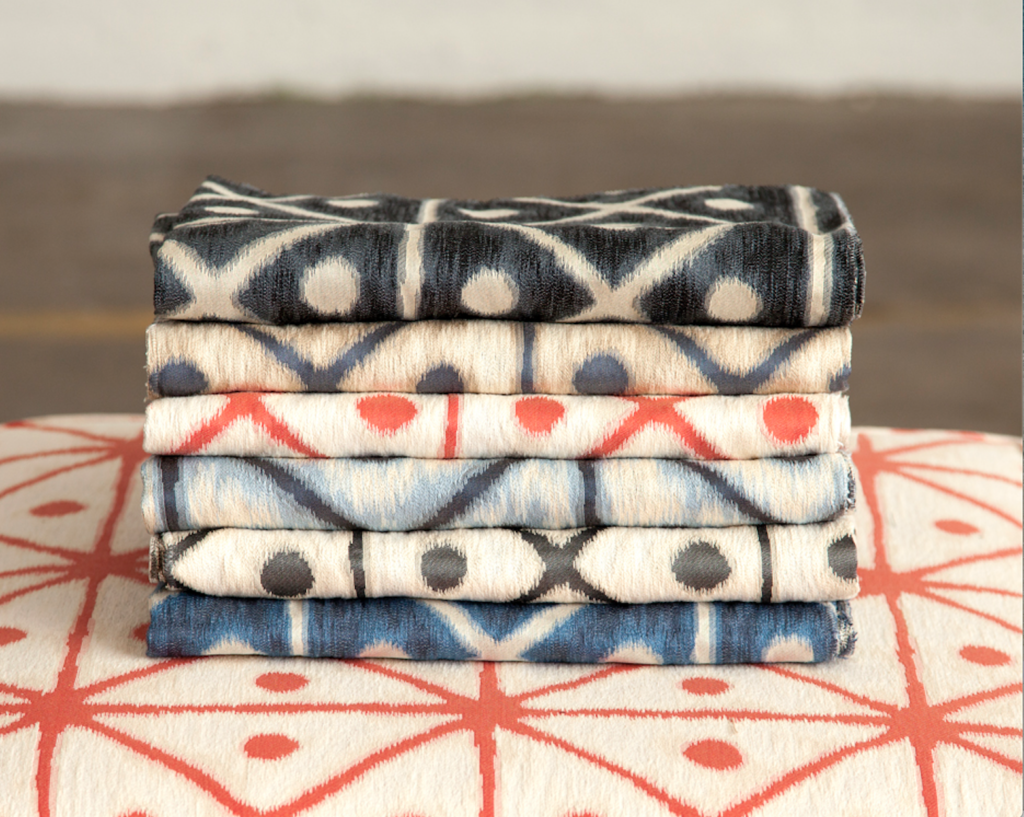
The following video shows how we developed two new jacquards in our Fall 2017 collection: Sumi and Magic Hour.
It’s that combination of technique, inspiration, and story that makes a fabric special, and makes people enjoy living with it.
Fascinating! I learned so much from this, I was probably one of those who thought you sat around designing patterns!